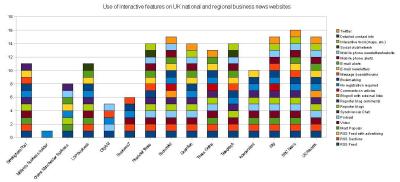It was a shame that I couldn’t stay longer at the 140 Character conference at O2 Indigo yesterday.
But, in the short time I was there, I did get to listen to a very interesting talk by Stephen Fry. How Stephen is discovering, using, experiencing and reacting to Twitter is fascinating.
One point he made particularly made me think. He explained his annoyance at how some in the mainstream press had suggested he had orchestrated the online reaction to Jan Moir and also the breaking of the Trafigura super-injunction.
Stephen was annoyed that he was being singled out when many, many others had particpiated in both these events. As he correctly pointed out, it was unfair to others who had been more involved and had not been recognised. It was, he argued, lazy journalism.
Actually, Stephen went on to argue, he doesn’t have any influence at all. His followers are intelligent beings who can make up their own minds about things. If he had asked them to stick their heads in the oven, would they have done it, he asked? It is a point he explains more fully in a post he wrote last month.
This gets right to the heart of my concerns with the perceptions of influence and responsibility that people have online. I have two points which I would very much appreciate your thoughts on:
Point 1: If a newspaper with a circulation twice the size of The Times (or 3.5 times the size of The Guardian) joined a campaign (even it it was late in the day), how much influence would you credit them with having over readers that joined in? How much responsibility does the newspaper have for the outcome of that campaign? How would you feel if this was a campaign with aims that you agreed with? How would you feel if it was something you disagreed with?
My point being that Stephen has over 1 million followers on Twitter. Why should his influence on them be any more or less than a newspaper has on its readers? How do we judge that?
If we can say his influence is the same, then surely we have to say that his responsibilities when wielding that influence must be the same. We need to look at this both for campaigns we agree with and ones we don’t because we will react differently to each. I suspect we are more likely to claim the newspaper acted irresponsibly if we don’t agree with their campaign’s aims.
Point 2: A very interesting chat with someone who understands the intricacies of UK libel law revealed this nugget to me: when it comes to libel, you do not necessarily have to sue the person who was first to utter the libel. You can sue anyone who repeated the defamation.
In this situation clients are advised to choose to go after those people who can afford to pay damages. The people most likely to fall into this category? Large organisations (like newspapers) and anyone with a large influence and (as a result) a potentially larger-than-average bank balance.
Of course Stephen is a pretty sensible tweeter and is unlikely to be retweeting libellous statements and getting involved with questionable campaigns. But, I worry about his lack of awareness of the influence he has and, therefore, the potential consequences of it. I don’t think he is the only one who thinks like this.
It seems, as I’ve mentioned before, that individual influence and responsibility online is a tricky thing for us all to guage. I think the consequences of that are interesting and slightly worrisome.


